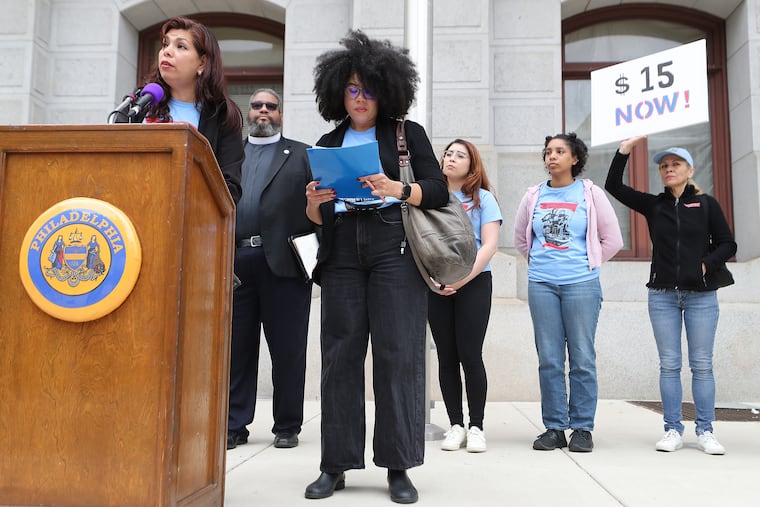Worker wages are growing faster in the Philadelphia region than any other metro area
Here's what the latest national and regional employment data tells us about Philadelphia's job market.

Low unemployment and workers demanding better pay are contributing to continued wage increases throughout the United States, and new regional data suggests that Philadelphia-area workers are currently getting the biggest gains.
Worker wages are growing faster in the Philadelphia region than any other metro area, according to new data from the U.S. Bureau of Labor Statistics (BLS), released last week. In Philadelphia, wages and salaries increased by 6.5% from March 2022 to March 2023.
Wage growth in the region had been trailing the U.S. average from September 2021 through the end of 2022, but it accelerated drastically from December to March, BLS data shows. Nationally, pay appears to be growing by a larger percentage for people with the lowest-paying jobs.
Hourly wages across the U.S. increased by 4.4% from April 2022 to April 2023, surpassing what economists expected. Wages for non-managers grew by about 5% over the year.
This tracks with recent research by the Federal Reserve Bank of Philadelphia, which found that most employers of low-wage workers saw their payroll costs grow as they tried to address retention challenges exacerbated by pandemic working conditions. Economists Ryotaro Tashiro and Keith Wardrip interviewed employers in the manufacturing and leisure and hospitality sectors in Pennsylvania, New Jersey, and Delaware throughout summer 2022.
“We asked employers about strategies that they utilized to mitigate some of the hiring challenges, and almost all interviewees said that increasing wages was one of the most successful strategies,” Tashiro said.
Ade Lawal, owner of recruiting firm Express Employment Professionals of Philadelphia, said many local employers that historically paid minimum wage — which remains at the federal minimum of $7.25 in Pennsylvania — have raised pay to match other areas of the country where state governments have increased the minimum wage.
“Most employers, in their minds … the minimum wage is somewhere between $12 and $15,” Lawal said.
Nearly 70% of Pennsylvania hourly workers made at least $15 per hour in 2022, according to state data, and just 2% were paid minimum wage or less. Gov. Josh Shapiro proposed a hike in the state minimum wage to $15 per hour in his first budget address, and local officials have rallied around the same.
U.S. Federal Reserve chair Jerome Powell said last week that wage growth should be closer to 3% when inflation rates are at the goal level of 2%. “By the way, I do not think wage increases are the principal cause of inflation,” Powell added.
The inflation rate was just under 5% in April, down from a peak of 9.1% in June.
Unemployment dips lower locally
Powell said last week that the U.S. labor market remains “extraordinarily tight” with 1.6 job openings for every unemployed person. That’s despite news of layoffs at certain large companies, including tech giants that over-hired in the pandemic and some retail companies that have experienced larger financial challenges.
A tight labor market also exists locally. In the Philadelphia metro area, the regional employment data released last week showed that 3.6% of the region’s workforce was unemployed in March, down more than half a percent from one year before.
While both the Philadelphia region’s civilian labor force and the number of employed people grew in March, according to preliminary BLS data, there’s been a more prolonged trend of people leaving the workforce, meaning that they’re no longer working and they’re not looking for work. People ending their careers early during the COVID-19 pandemic has been a contributor to lower workforce participation across the country, as well as people retiring at the age they had always planned to.
“In terms of supply [of workers], increase in retirement-age population has played a large role,” Tashiro said.
High demand is also contributing to low unemployment, said Tashiro. The number of job openings in Pennsylvania since mid-2021 has been between 400,000 and 450,000, Tashiro said, compared with roughly 300,000 in a typical month between 2018 and 2019.
Some people may also be dropping a second job as they’re called back to in-person work, said Lawal, or they’re seeking out gig work to have better flexibility in their schedules.
Nationally, unemployment was back down to 3.4% in April, matching the January number that was the lowest since 1969.